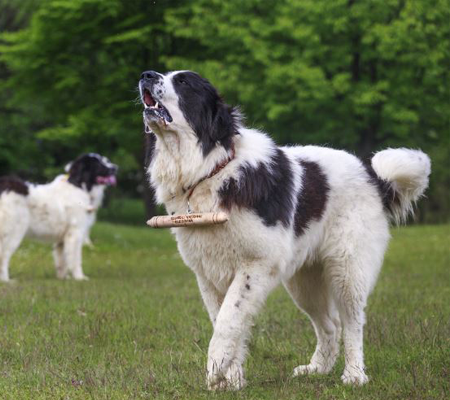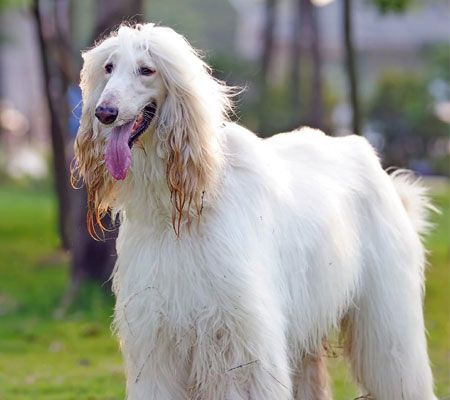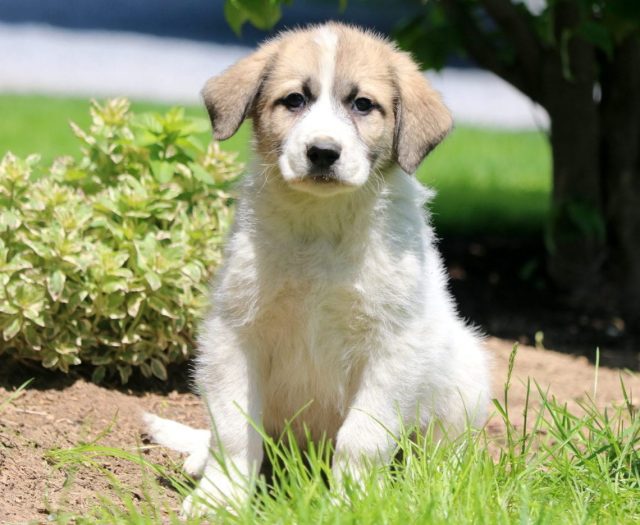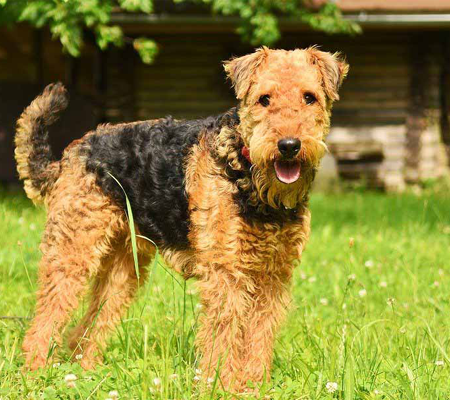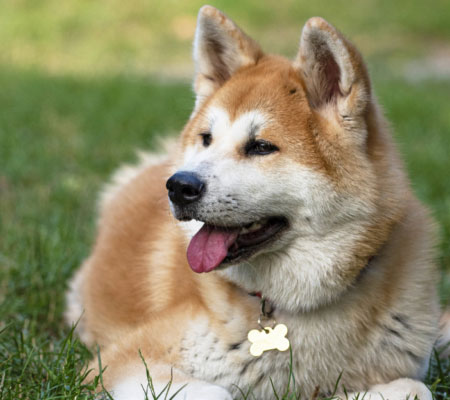The Bucovina Shepherd is a very uncommon dog
breed that is seldom recognised outside of Romania. This breed, which is said
to have originated during the ancient Roman Empire, was primarily utilised as a
guard dog and a violent defender of animals. The Bucovina Shepherd readily
drove away the hungry wolves and bears that roamed the Romanian mountains
thanks to its remarkable size and strong, loud bark.
The Bucovina Shepherd is distinguished from other
Mastiff breeds by its thick coat and large muzzle, and it is also lighter than
its closest relatives. This dog was bred to remain always on guard and has
incredible stamina, making it unsuitable for apartment living. The devoted
Bucovina Shepherd has deep relationships with its family members and may be
compassionate and caring with the youngsters it was raised with, but it must
not be trusted with outsiders owing to its distrust of strangers.
Bucovina Shepherd Dog Highlights
Breed Size
Medium
Nature
Playful, Friendly
Energy Level
Active
Intelligence
Medium
Barking Level
Frequent
Coat Length
Long, Medium
Breed Group
Hound
Droll Amount
Low
Good with
Familes, Children, Dog
Feed Level
Medium, High
Colour Type
Black and white, grey and white, brindle and white.
Other Facts
East to groom, easy to walk, easy to handle, easy to train.
Dog History
Bucovina refers to a hilly area in north-eastern
Romania, which is very definitely where this breed of dog originated. While
many people assume it is a Mastiff-like breed produced by the ancient Romans,
research suggests it may be a 'Lupo Molossoid' rather than a Molosser breed,
due to its wolf-like traits and absence of a brachycephalic face.
Although the exact era of its birth is unknown,
it is conceivable that this breed of dog predates the Roman Empire by more than
2,000 years. They are assumed to have altered little over time due to their
isolation in the remote alpine terrain. They have meticulously kept cattle on
the Carpathian Mountains of Bucovina for ages.The farmers greatly profited from
having a bold, powerful guard dog like the Bucovina Shepherd on their side
since their many flocks of goats and sheep were at significant risk from local
predators including as wolves, bears, and lynx.
While this enormous and strong breed flourished
in the countryside, it has recently made a surprise easy adjustment to
modern-day Romanian urban life. Many Romanians retain the Bucovina Shepherd dog
as a pet because of its innate guard dog characteristics and, probably most
significantly, its ability to be tranquil with its family. The fact that this
breed is frequently used as a watchdog in the home is viewed as a significant
benefit.
The Bucovina Shepherd is now exclusively
recognised by the Romanian Kennel Club, and the first breed standard was
created in 1982. It is an extremely rare breed outside of its native area.
22-27 inch 43-55 kg 13-15 year
Height

Weight

Life Span
Health and Care
The Bucovina Shepherd has not been subjected to
any health investigations, which is unsurprising considering its paucity.
However, considering the breed's history of labouring in difficult situations
in the outdoors, it's safe to presume it's a sturdy breed. Given their great
height, it is reasonable to infer that they suffer from the health issues that
are common in big to gigantic breeds, such as:
- Gastric Dilatation Volvulus (GDV)
- Hip Dysplasia
- Elbow Dysplasia
Care
It is critical to take appropriate care of the
animals when rearing Bucovina Shepherd dogs. Providing them with a vast, open
garden to patrol would be beneficial, since it would allow them to demonstrate
their natural, territorial guarding behaviour.
It has been bred for its stamina and capacity to
be continually on the go over the years. To suit this dog's activity needs, a
daily long walk of roughly an hour is required.
The Bucovina Shepherd dog is a tough breed that
is not recommended for inexperienced handlers. Because they are not very eager
to please, their brilliance may frequently work against you. They are highly
autonomous and want to be their own boss after surviving for so long in
Romania's hilly mountains with minimal assistance. A trainer must be extremely
consistent in order to bring a Bucovina Shepherd under control.
Given their physical power and proclivity for
violence against strangers, it's evident that this breed requires an
experienced owner who won't allow them to become a social liability. These dogs
are far from hopeless, and in the proper hands, they may become well-trained
over time.
Dog Breed Care Tips and
Important Instructions
The annual cost of raising a bucovina shepherd
dog, including food, vet bills, toys, and licencing, may be anywhere from $420
to $780. This does not include capital costs like as sterilisation, a collar
and leash, a carrier, and a doggy cage. Before bringing your bucovina shepherd
dog home, make sure you have all of the necessary necessities.
Shepherd from Bucovina Dogs require regular
physical activity to be active, refresh their minds, and stay healthy. Physical
activity also aids bucovina shepherd dogs in overcoming boredom, which can
contribute to undesirable behaviour. Many of your bucovina shepherd dog's
innate needs to dig, retrieve, chase, chew, and herd would be satisfied by
physical exercise. Exercise requirements vary depending on the age and condition
of your bucovina shepherd dog, but 10 minutes in the back yard and a daily walk
down the street are unlikely to suffice. If your bucovina shepherd dog is an
adolescent between the ages of six and eighteen months, her requirements will
be slightly greater.
Brushing your bucovina shepherd dog on a regular
basis can help minimise shedding and keep him clean. During the summer, check
for fleas and ticks every day. Bucovina shepherd dogs only need to be washed a
few times a year in some cases. Cut off or comb any mats from the Bucovina
shepherd dog's coat before giving him or her a wash. If you don't rinse all of
the soap out of the coat, dirt will attach to the soap residue.
Puppies are much simpler to manage. Place one
hand beneath your bucovina shepherd dog puppy's chest when carrying him, with
the forearm or other hand supporting his back legs and rear. Never grab your
puppy's forelegs, back of the neck, or tail to lift him. Lift a bigger,
full-grown bucovina shepherd dog from the underbelly, holding his or her chest
with one arm and his or her rear end with the other.
Feeding
- Shepherd from Bucovina Between the ages of eight
and twelve weeks, pups require four meals every day.
- Feed three meals a day to bucovina shepherd dog
pups aged three to six months.
- Puppies aged 6 months to 1 year should be fed two
bowls of chow every 24 hours.
- When your bucovina shepherd dog reaches the age
of one, one meal in a 24-hour period is usually plenty.
- Adult bucovina shepherd dogs, on the other hand,
may benefit from two smaller portions. It is your responsibility to become
acquainted with the food habits of your Bucovina shepherd dog.
Adult bucovina shepherd dogs have a balanced diet
from high-quality dry food that can be blended with water, canned food, or
broth. Cottage cheese, fruits and vegetables, and cooked eggs may be enjoyed by
your bucovina shepherd dog, but they should make up less than 10% of his daily
diet. Bucovina Shepherd Dog puppies should be fed high-quality puppy chow from
a reputable brand. However, you should strive to limit "table food"
because it can lead to mineral and vitamin deficiencies, dental and bone
problems, as well as finicky eating habits and obesity. Clean, fresh water
should always be provided, and food and water bowls should be washed often.
Fun Facts
- Bucovina Shepherd dogs are huge and intimidating,
yet they have a more slender physique than most other dog breeds. Their muzzle
should not be shorter than their skull, and their head should be broad and
intimidating.
- In comparison to the size of their heads, their
eyes are tiny. The eyes are often almond-shaped and dark in hue, with dark
eyelids surrounding them.
- The breed monitors the farm or herds during the
night. With a spacious back yard, an adult dog will have plenty of room to run
around.
- The Bucovina Shepherd dog is a fantastic
watchdog, with a deep, strong bark and a high level of alertness when outsiders
enter its domain.
- Bukovina Sheepdogs have a fair amount of
wanderlust. They enjoy to travel over the world and may escape once or twice,
but they prefer to stay secure at home most of the time. It's safer to educate
kids how to contact you at any time.
- Compared to other dog breeds, Bukovina Sheepdogs
have a stronger desire to chase and catch anything. Cats and other tiny animals
may be at risk. Although this is a natural tendency, it does not imply that
Bukovina Sheepdogs are hostile. This breed should be kept on a leash at all
times.
- When left alone by their owner, they are prone to
panic, scream, bark, and whimper, just like any other puppy. This problem may
be solved with good socialisation and quality time spent with the dog.
Home Training Tips and General
Information
You must always keep an eye on your puppy until
he is trained. You must cage her if you are unable to do so. Make a calendar
for the puppy to help him settle in quickly. Hourly potty trips, feeding times,
sleep times, strolls, play time, training, and so on should all be included in
the schedule. A dog with a full day has no time to get bored or mischievous.
Teach the dog to respect you. Bucovina Shepherd
Dogs live in groups and follow a leader intuitively. If you establish your
dominance in no clear terms, training will be simple since the puppy will
always obey your commands and will not challenge your authority.
Make use of only positive training methods. Your
Bucovina Shepherd Dog should never be yelled at, smacked, or punished. It is
not only harsh, but it may also lead to behavioural issues. Electrical shocks,
prong collars, sprays, and other methods may cause injury to the animal.
"Nothing in life is free," teach the
puppy. This is a theory that is widely acknowledged as an effective coaching
technique. As you reinforce this, your dog will learn that in order to receive
anything, such as attention, a walk, or a treat, he must behave nicely.
From the first day, demonstrate the meaning of
the word "no." Jumping, yelping, tug-of-war, howling, or fleeing open
gates and doors should not be reinforced. When there is good behaviour, applaud
it; when there is terrible behaviour, ignore it or leave. The puppy will learn
that he will lose his companion/playmate if he is naughty.
To address a problem, you must catch the Bucovina
Shepherd Dog in the act and scare him with a bottle of stones. As soon as
you've done that, have him take responsibility for his actions and reward him
with a snack and praise. Bucovina Shepherd Dogs have no recollection of earlier
events, thus chastising him after an occurrence is pointless.
Make a point of calling/using his name in a
pleasant manner. Don't say "Terrible TOM" or "No Tom,"
since this will confuse the Bucovina Shepherd Dog into thinking you're calling
his name for anything bad. Hugs, stroking, walks, treats, and other pleasurable
experiences must be associated with the dog's name. If this occurs, he will
come to you readily when you call his name.
Create a short and simple workout regimen that
you can do three times a day for around 10 minutes each time. Long, repetitive
lessons might bore the Bucovina Shepherd Dog, and the learning session will be
abandoned. Make teaching fun by using trick training sessions to teach commands
like as sit, down, and come.
Learn everything there is to know about house
training, leash walking, and house breaking, as well as food training. These
are the fundamentals that every Bucovina Shepherd Dog puppy should be aware of.
Understand all of the breed's quirks and characteristics. This will provide you
with valuable information on how to properly teach your dog.
FAQS
|
What country did the Bucovina Shepherd dog come from? |
|
The Bucovina Shepherd Dog (Câine Ciob?nesc de Bucovina) is a huge and
robust rustic livestock guardian dog with strong guard dog characteristics.
Shepherds in the Carpathian Mountains evolved it over many decades. Bucovina,
an area in northern Romania, was the birthplace of the race. |
|
Is it possible to keep Romanian shepherd dogs as pets? |
|
As a result, this breed is best suited to experienced dog owners. The
Romanian Mioritic Shepherd Dog makes a fantastic family friend when properly
taught and socialised, yet he will always be a touch aloof and wary around
strangers. |
|
What do shepherd dogs have in common? |
|
German shepherd dogs are herding dogs recognised for their bravery,
devotion, and protective instincts. This breed is ideal for guard dogs,
police dogs, military dogs, blind guide dogs, and search and rescue dogs. |
|
What kind of shepherd dog is the most powerful? |
|
The 140-pound Kangal, often known as the Anatolian Shepherd, is the
world's strongest dog in one very critical area: biting force. The force of
their chomp has been recorded at 743 PSI, which is more than enough to break
bone. Fortunately, these dogs, like their Mastiff cousins, are quite
sweet-natured. |
|
What is a shepherd from Bucovina? |
|
The Romanian Bucovina Shepherd (Romanian: Ciob?nesc Românesc de Bucovina)
is a big, robust livestock guardian dog with strong guard dog abilities.
Bucovina, an area in northern Romania, was the birthplace of the race. |
|
What to do with a shepherd dog from Bucovina? |
|
They require a lot of movement and excitement to be relaxed and happy,
making them perfect pets for an active family who enjoys being outside. The
Bucovina Shepherd is a large, active dog that was developed to travel the
mountain passes with their sheep for long periods of time. |
Bucovina Shepherd Dog Unique Name
| Male Name | Female Name |
|---|---|
| Brady | Bianca |
| Carter | Birdie |
| Clifford | Biscuit |
| Diego | Callie |
| Diesel | Dolly |
| Harvey | Gidget |
| Koda | Isabella |
| Milo | Koko |
| Odin | Matilda |
| Petey | Mitzi |
| Quincy | Polly |
| Shadow | Sadie |
| Stanley | Samantha |
| TJ | Sugar |
| Vinnie | Brandi |
| Zeus | Brie |
| Tex | Butter |
| Truffles | Chi Chi |
| Turbo | Kelly |
| Willow | Lexie |

